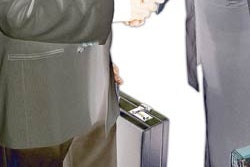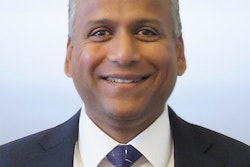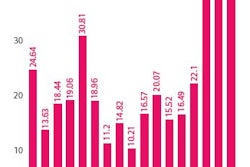
The world of procurement can be pressure-packed and intense. CPOs are constantly looking for new ways and areas in the organization to cut costs, reduce supply chain risks and drive supplier innovation. A preferred method of many in procurement is to integrate technology that can assist them in analyzing thousands of bids in seconds and shuffle through hundreds of suppliers to determine the most cost-effective one. While procurement departments are often shunned in business units because of the cost-cutting nature of their role, they are often the backbone of the organization, providing financial stability and structure.
Managing and monitoring an organization’s daily spend is no easy task. CPOs need to be able to take charge of spend, while simultaneously looking for ways to cut costs and adapt to new scenarios. To efficiently perform this task, CPOs need to have visibility into all departmental spend, even those departments that may seem tangential. When they don’t, blind spots are created with the potential to negatively impact budgeting and financial controls. These blind spots within the organization cannot be forgotten in the procurement process, for CPOs can play an integral role in assisting in cost savings initiatives, while acting as strategic partners and advisors.
The Missing Element
One of the many overlooked areas within an organization is the in-house events department. Organizations, some of which spend $500 million annually on events, utilize these platforms for a variety of reasons, including product launches, industry networking and improved market reputation. According to a report from the Convention Industry Council, about 225 million people on average attend more than 1.8 million events in a given fiscal year, including 270,000 conventions and 11,000 trade shows. Similarly, 21 percent of corporate marketing budgets are compromised by events and trade shows.
Procurement is often kept out of the loop in terms of event spend and planning. While event organizers and planners are experts in their given field, many are not experienced when it comes to the savings and managing of budgets. Because of this, event organizers are prone to unauthorized purchasing, fraud, unfavorable rates and terms, as well as time-consuming reconciliations that need to be completed after the fact.
Overcoming the Challenge
Given all of this, here are some suggestion on how procurement departments can abolish these blind spots, and ensure they don’t miss a beat or category:
- Centralize the purchasing power. Greater cost savings is enabled through one vendor servicing multiple events, as is true in many other departments. What we think of as traditional buying power is magnified in the event world, resulting in deeper vendor supplier relationships and value generation down the road.
- Use applicable data insight. It is the job of CPOs to provide insight into cost-cutting practices, but it’s also the job of the event organizers to provide the platform for CPOs to be successful. A strategic partnership between procurement professionals and event planners or organizers can only be possible if both parties are willing to be open and transparent regarding their spend and daily practices.
- Look for hidden cost savings. Through the availability of data and open communication between teams, procurement professionals can look for and identify areas to cut costs, no matter the initiative or event. The money saved through these initiatives can result in increased value for the organization, while furthering strategic partnerships.
To stay ahead of the curve and ensure value creation, CPOs need to instill an internal protocol of communication and payment that allows for greater visibility, transparency and collaboration into all areas of organizational spend. CPOs and event organizers and planners need to work together to combat event overspend and the potential of lingering questions from the C-suite. By working together as strategic partners, both departments can provide greater value and worth for the organization.
Talia Mashiach is the founder and CEO of Eved.














